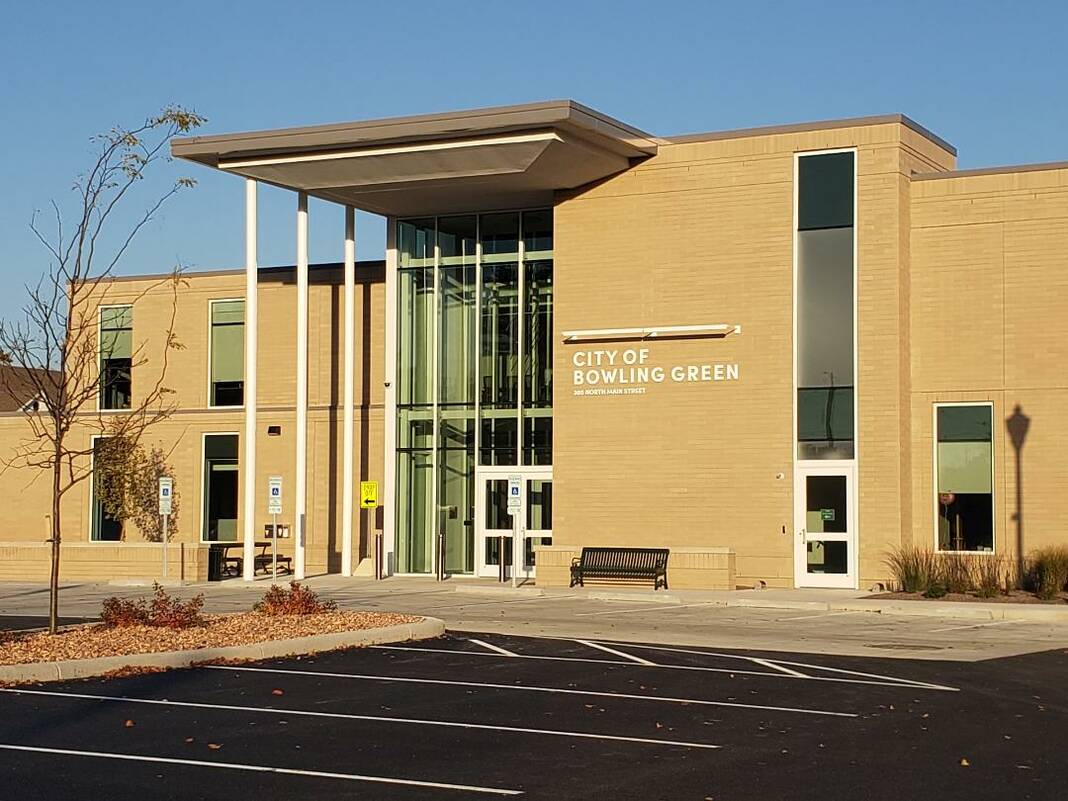
Bowling Green City Council on Tuesday unanimously approved an ordinance to apply for Safe Routes to School project funds through the Ohio Department of Transportation.
If the application is approved, the funds would be applied to a shared use path project connecting Crim School and Carter Park.
During its Feb. 5 meeting, council passed a resolution approving a Safe Routes to School plan for the city, with projects including the shared use path as well as pedestrian hybrid beacons at the intersection of Wooster and Enterprise streets and at Poe Road at the high school/ middle school. According to the legislative package document prepared for council, “with a Safe Routes to School plan in place, the city is now eligible for funding from ODOT. This application will be for the maximum annual funding of $500,000” for the path. “The city will be applying for ODOT abbreviated safety funding for” the hybrid beacons, the document said.
The ordinance, which was introduced and given all three readings Tuesday, passed as an emergency measure, without comment.
The city’s Safe Routes to School plan was created with the assistance of a 15-member committee made up of city and school officials representing all Bowling Green schools. According to a legislative package document, “Ohio’s Safe Routes to School Program aims to assist communities in developing and implementing projects and programs that encourage and enable children in grades K-12, including those with disabilities, to walk or bike to school safely.”
Prior to Tuesday’s council meeting, council met as a committee-of-the-whole to discuss how to move forward with American Rescue Plan Act funding.
The city of Bowling Green received more than $7.3 million in funding through ARPA, and to date has designated approximately $6.9 million, including $3.9 million in residential paving projects. Nearly another $3 million was spent on a series of grants and projects, including $700,000 for the city’s owner-occupied home rehabilitation program and housing grants, $500,000 for grants to non-profits, $250,000 for improvements at City Park and $100,000 for downtown alleyway improvements. That leaves a balance of $379,713 which has not yet been designated. Of the funds designated, approximately $6.49 million has actually been expensed or obligated so far.
The city has until the end of 2024 to designate ARPA funds, and until the end of 2026 to spend them.
During a presentation delivered Tuesday, Finance Director Dana Pinkert recommended that, in light of changing guidance from the federal government on ARPA funds, the remaining portions of some allocations, as well as the $150,000 each designated for pickle ball court and dog park projects, be re-allocated for capital reserve funds, a move allowed under ARPA guidelines. The monies would remain designated for their original uses, she said, but this would provide for a more flexible timeline for utilizing the funds.
“What that does, then, is everything’s being bought that would have been bought, or allocated that would have been allocated, but we have more time to prepare” for the projects, Councilman Bill Herald said.
Council also discussed the potential uses for the balance of $379,713. Municipal Administrator Lori Tretter said that, at council’s behest, the administration looked at their strategic goals with the idea of seeing how ARPA funding might be applied to them. She said that $100,000 might be allocated towards the goal of a Main Street study of bicycle and pedestrian infrastructure, and $150,000 could be allocated towards sidewalk improvements. The remaining $129,713 could be used to help fund other already approved ARPA projects.
Council President Mark Hollenbaugh took up that suggestion and formally recommended that the administration craft legislation to execute it, as well as the suggestions for re-allocations.
The recommendation passed by a voice vote of council, with none opposed.
During the council meeting, Mayor Mike Aspacher acknowledged council’s “robust” discussion on the ARPA issue. To date, he said, “we have made a very positive, significant impact in the community using those funds and appreciate council’s effort to work with the administration to ensure we were doing just that.”
In other business:
• Council heard from Bob Kreienkamp and Brian Sell of the city’s pickle ball organization. Kreienkamp noted that all totaled, the group expects to have raised nearly $300,000 for planned courts at the Community Center, and said that an additional $50,000 from the city could help get the project off the ground. The planned series of courts is expected to cost $350,000 to $400,000.
• Heard from three Bowling Green State University students – Audrey Seitz, Tyler Hallman and Evan Thornton – who are part of a Leadership and Service class working with the BG Save Our Neighborhoods Groups on their upcoming Rock the Block event, scheduled for April 6. During the event, volunteers will help more than 15 properties that have requested assistance with their homes’ exteriors.

